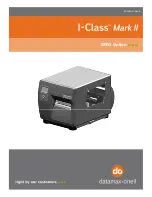
Page 8
RVS-RCS Installation Guide
The occupancy sensor should be installed in the space where the receiver is mounted and
connected to the occupancy control equipment. The signal will travel through some material
barriers.
Refer to the tables for range considerations with building materials that reduce the radio signal
power.
Material
Attenuation
Wood
0 - 10%
Plaster
0 - 10%
Glass
0 - 10%
Brick
5 - 35%
MDF
5 - 35%
Ferro concrete
10 - 90%
Metal
90 - 100%
Aluminum
90 - 100%
Wireless System Layout Hints
Avoid locating transmitters and receivers on the same wall.
Avoid locating transmitters and receivers where the telegrams must penetrate walls at acute
angles. This increases the material the telegram must pass through reducing the signal power.
Avoid large metal obstructions as they create radio shadows. Place receivers in alternate locations to
avoid the shadow or use repeaters to go around the obstacle.
Do not locate receivers close to other high frequency transmitters. Leave at least 3’ between the
receiver and any other source of interference including, ballasts, LED drivers, computers, video
equipment, WI-FI/LAN routers, GSM modems and monitors. Transmitters are not affected by
these sources of interference.
Agency Listings and Compliance
Built in an ISO9001 certified facility
FCC Part 15.231 (902 MHz models only)
Contains FCC ID: TCM300U
The enclosed device complies with Part 15 of the FCC Rules.
Operation is subject to the following two conditions:
(I.) This device may not cause harmful interference and
(ii.) This device must accept any interference received, including
interference that may cause undesired operation.
IC RSS-210
(902 MHz models only), Contains IC: 5713A-STM300U
CE (868 MHz models only), CE Marking
ARIB STDT108 (928MHz models only)
Complies with the Japanese radio law and is certified according to ARIB STDT108.
This device should not be modified (otherwise the granted designation
number will become invalid)
Energy Code Compliance
California Energy Commission Title 24
Washington State Energy Code
ASHRAE 90.1-2013
IECC 2015
R 206-000372
Material
Radio Range-typical
Line of sight:
80’ (24m) corridors
Line of sight:
150’ (46m)open halls
Plasterboard:
80’ (24m) through 3 walls
Brick:
33’ (10m) through 1 wall
Ferro Concrete:
33’ (10m) through 1 wall
Ceiling:
not recommended
Copyright 2015-2018 Echoflex Solutions, Inc. | Specifications subject to change without notice.
Document 8DC-5543 | Revision 2.0| 8188M21-5543-1
| Rev F
Echoflex Solutions, Inc.
#1, 38924 Queens Way | Squamish | BC | Canada | V8B 0K8
Toll Free: 888-324-6359 | Phone: (778) 733-0111 | Fax: (604) 815-0078
Email: [email protected] | www.echoflexsolutions.com
For the latest info on Echoflex Solutions sensors
scan the QR code


























